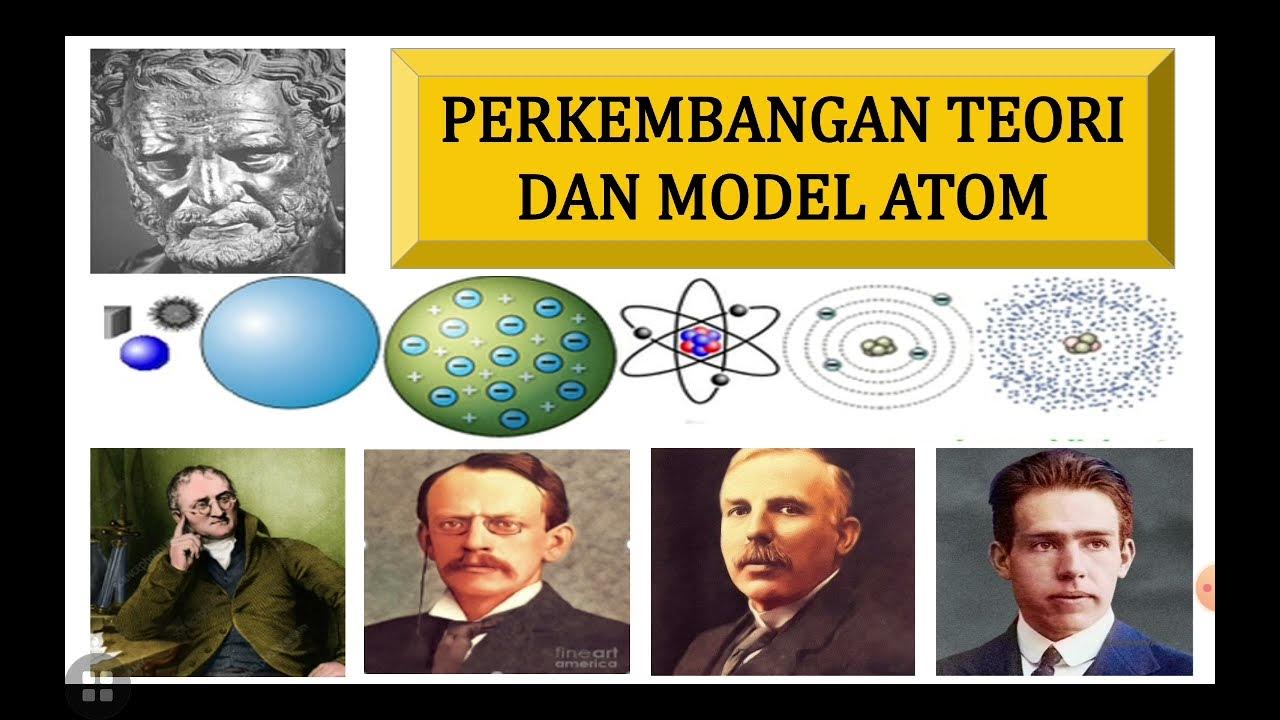3.4.2 - Construção do modelo atômico atual: Contribuições de De Broblie, Schrödinger e Heisenberg
Summary
TLDRThis video delves into the evolution of atomic theory, starting with Bohr's model for hydrogen and expanding to the complexities of poly-electronic atoms. Key advancements by De Broglie, Heisenberg, and Schrödinger are highlighted, focusing on wave-particle duality, the uncertainty principle, and quantum mechanics. Schrödinger's wave equation leads to the concept of orbitals, regions where electrons are most likely to be found. The video emphasizes the probabilistic nature of electron positions, the importance of quantum numbers, and how the modern atomic model challenges earlier notions of fixed electron orbits. It concludes with a look at electron configurations and their implications in quantum theory.
Takeaways
- 😀 Bohr's model successfully explained hydrogen's emission spectra but was limited for polyatomic atoms.
- 😀 de Broglie proposed that matter, like light, could exhibit both wave and particle properties, which was experimentally validated.
- 😀 Heisenberg's Uncertainty Principle states that we cannot simultaneously know both the position and momentum of an electron.
- 😀 Schrödinger's wave equation revolutionized atomic theory by introducing orbitals—regions of high probability where electrons are likely to be found.
- 😀 The wave-particle duality of electrons means their behavior can be observed either as a wave or a particle, depending on the phenomenon.
- 😀 Quantum numbers are introduced to describe electron states, including energy levels, sublevels, and orbital shapes.
- 😀 Electrons are not in fixed orbits but in orbitals, which are regions with a probability of electron location.
- 😀 The four quantum numbers—principal, angular momentum, magnetic, and spin—define an electron's position and energy within an atom.
- 😀 Electrons can transition between orbitals by absorbing or emitting energy, leading to quantum jumps between energy levels.
- 😀 The current atomic model does not allow us to know an electron's exact position, only a probabilistic region in which it is likely to be found.
Q & A
What was the main issue Bohr's model couldn't explain?
-Bohr's model worked well for hydrogen, but it couldn't accurately explain the emission spectra of polyatomic gases, which have more than one electron. The calculations deviated when applied to gases with multiple electrons.
How did de Broglie contribute to the development of the atomic model?
-de Broglie proposed that matter, specifically electrons, could also exhibit dual wave-particle behavior, similar to light. This was a major step forward in understanding the nature of electrons at the atomic level.
What was Heisenberg's contribution to quantum mechanics?
-Heisenberg introduced the uncertainty principle, which stated that it's impossible to precisely measure both the position and momentum of an electron at the same time. This highlighted the limits of classical physics in describing atomic phenomena.
What is the significance of Schrödinger's wave equation?
-Schrödinger developed a mathematical equation that describes the wave-like behavior of electrons. It led to the concept of orbitals, regions where electrons are most likely to be found, rather than fixed orbits as Bohr had suggested.
What are quantum numbers and what do they represent?
-Quantum numbers are values derived from solving Schrödinger's wave equation. They represent the energy level, orbital shape, orientation, and spin of electrons within an atom, giving a probabilistic map of where electrons are likely to be found.
Why can't we know the exact position of an electron?
-Due to the uncertainty principle, we can't simultaneously know both the position and momentum of an electron. The more precisely we know one of these quantities, the less precisely we can know the other.
What is the difference between an orbit and an orbital?
-An orbit refers to a fixed path an electron might follow around the nucleus, a concept from Bohr's model. An orbital, on the other hand, is a three-dimensional region around the nucleus where the probability of finding an electron is highest, as described by modern quantum mechanics.
How does an electron move between orbitals?
-An electron can absorb or emit energy when transitioning between orbitals, a phenomenon known as quantum jumps. These transitions correspond to specific energy levels and result in the absorption or emission of light.
What are the four quantum numbers?
-The four quantum numbers are: the principal quantum number (n) which indicates the energy level; the angular momentum quantum number (l) which describes the shape of the orbital; the magnetic quantum number (m) which indicates the orientation of the orbital; and the spin quantum number (s) which represents the electron's spin.
How does the concept of orbitals differ from the earlier ideas of electron orbits?
-Earlier models, like Bohr's, suggested that electrons move in fixed orbits around the nucleus. The modern view, based on quantum mechanics, replaces these orbits with orbitals, which are regions of space where electrons are most likely to be found. These orbitals have different shapes and sizes depending on the energy level and quantum numbers.
Outlines

This section is available to paid users only. Please upgrade to access this part.
Upgrade NowMindmap

This section is available to paid users only. Please upgrade to access this part.
Upgrade NowKeywords

This section is available to paid users only. Please upgrade to access this part.
Upgrade NowHighlights

This section is available to paid users only. Please upgrade to access this part.
Upgrade NowTranscripts

This section is available to paid users only. Please upgrade to access this part.
Upgrade NowBrowse More Related Video

Atomic Structure | Grade 8 Science DepEd MELC Quarter 3 Module 3

What is the Bohr model of the atom?

STRUKTUR ATOM (Teori Atom)

Kimia X - Struktur Atom #3 | Perkembangan Teori dan Model Atom

Teori atom mekanika kuantum- kimia SMA kelas 10 semester 1

Evolution of Atomic Model 400 BC - 2020 | History of the atom Timeline, Atomic Theories
5.0 / 5 (0 votes)